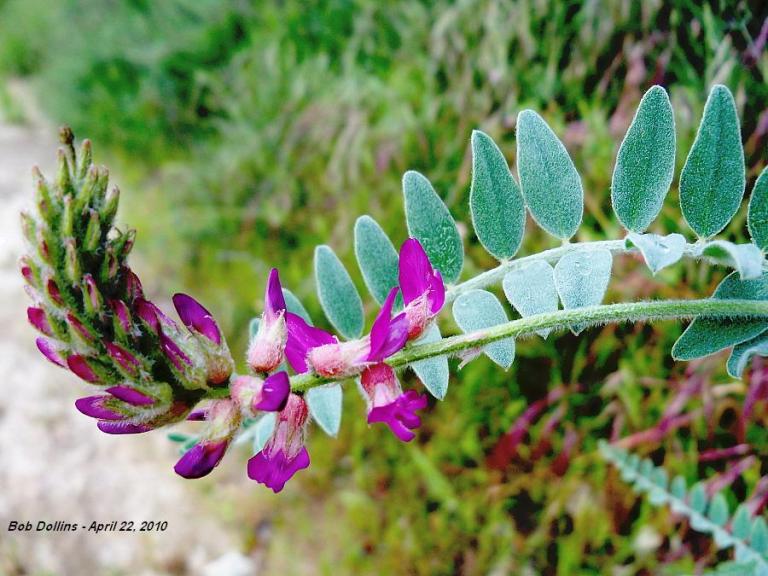The plant seen below is called the Astragalus Brauntinii. It is also known as Braunton’s Milk-Vetch. This beautiful plant is found in the state of California, but is an endangered species.
The plant is known to be a dicot (bears both male and female flowers on one plant), a perennial herb (their foliage dies back in the fall, but the roots hibernate over winter and resume growth the following spring <Herb Gardening Basics 101>), and it is limited to California. <Astragalus Brauntonii> it has a blooming period from January to August. It is endemic to southern California, ranging from the central south coast to the north Peninsular Ranges of the Los Angeles Basin in Ventura area, and Orange counties. It is limited to four areas: The Santa Monica, San Gabriel, and Santa Ana Mountains and Simi Hills in the San Fernando Valley. It’s limited to carbonate soils (limestone outcrops) in chaparral, coastal sage scrub, closed-cone forest, and grassland communities of the southern California Mountains. <Sclafani Christi J.>
The plant grows up to 5 feet tall and will last 2 to 3 years. Due to its size, woody caudex, and multiple stout erect stems, it can be mistaken for a shrub. It is actually a raceme with 36 to 60 flowers. The flowers will turn brown and papery after starting to fade, but will not shed quickly.
Its breeding is monoecious, with bisexual flowers. The bees will pollinate the plant, with a rare role from the ants.
.
This plant is really unique looking and the color is very beautiful. It is very interesting that the plant is endangered. I really like that you included the information about how it is pollinated and its cool that ants and bees both play a role.
LikeLike
What role do the ants play?
LikeLike
This plant looks very cool and it is interesting how ants can pollinate it as well.
LikeLike
Very interesting, 5 ft tall with 2-3 year life spans wow! Also beautiful pictures!
LikeLike
This flower is really amazing. It’s really pretty, and it amazes me that it holds between 36-60 flowers. I wish this flower was more popular around our area so we could enjoy its beauty.
LikeLike
I enjoyed reading about this flower. It amazes me that it can bare between 36-60 flowers on one single plant. It is a really beautiful flower, and I wish it was more popular and could grow in more areas so that way we could enjoy its beauty.
LikeLike
This is such a beautiful plant and the fact that it can bare 36-60 flowers makes it even better.
LikeLike
This is truly a beautiful plant. The fact that it can bare 36-60 flowers makes it even better.
LikeLike